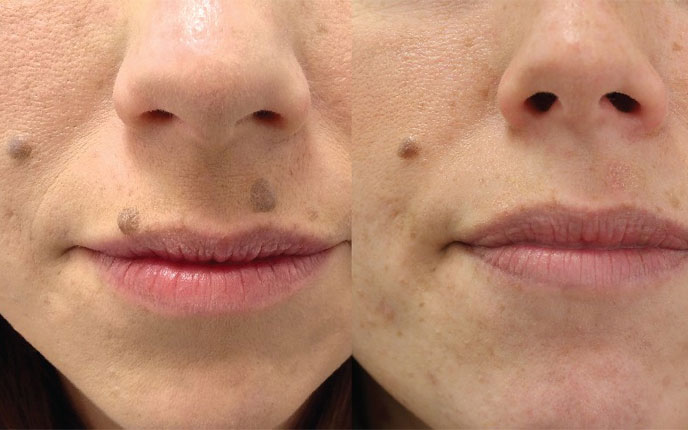Stop Connecting the Dots Remove the Worry with our Mole Extraction Treatments
Mole Removal
What are Moles & Why They are Caused?
Moles are basically a cluster of pigmented cells seen on the skin as black or brown spots. They are known medically as nevi, and the pigmented cells are known as melanocytes. Moles appear on any part of the body and by the time you reach adulthood, you may have anywhere between 10 to 40 moles on your body. Some moles fade away with age, while others change color or even expand in size. Melanocytes come together and form a cluster at a particular spot on the body.

What are the types of moles?
Moles are classified into two types: congenital moles, which appear at birth, and acquired moles, which appear later in life. While most moles are safe and seldom develop malignant, some customers may choose to have them removed for cosmetic reasons. However, if a mole becomes uncomfortable, itches or bleeds grows fast, or changes in symmetry, it is best to visit a dermatologist.
Primary Affected Regions
Moles may occur anywhere on the body, including the face (cheeks, forehead, nose, chin, and so on) and the torso (neck, arm, hand, fingers, legs, stomach, chest, back, etc.). Singular moles and groups of moles are both prevalent.
What are the various mole removal options?
- Shaving: Shaving with a scalpel or razor may remove superficial moles with malignant skin cells that are not too deep into the skin layers. Local anesthetic is used to numb the region before shaving. This surgical procedure does not need the use of sutures to heal.
- Laser mole removal: When focused light radiation (laser) is given to the skin, non-cancerous moles of tiny size may be broken down by the heating impact. Laser removal is beneficial for areas of the body that are difficult to reach with conventional treatments. This treatment is effective for moles that are flatter in appearance or smaller in size. Multiple moles might be removed from the same area of the body at the same time. This procedure may need further visits to a dermatologist for full mole removal.
- Cryotherapy (freezing): Frozen liquid nitrogen may be administered to benign moles that do not penetrate deep into the skin. This causes the moles to freeze and fall off.
- Surgical removal: The mole is anesthetized, then the mole and some surrounding skin are taken off using a knife or surgical scissors. It is useful for removing deep malignant moles. Few stitches may be used to seal the injured skin, leaving a scar that disappears with time. A surgical dressing may be applied to the wound to aid in its healing. This guarantees that the roots are completely removed and reduces the possibility of recurrence. The treatment takes roughly 30-40 minutes and is performed under local anesthetic.
If you would like more information about Mole Removal Treatment, please contact us at 8591137453 or fill out the appointment request form and one of our representatives will contact you within 24 hours.
